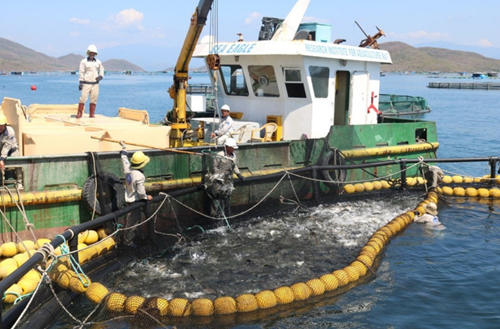Green transition across the seafood supply chain, from farming to processing and distribution, has become a global imperative, said To Thi Tuong Lan, Deputy Secretary-General of the Vietnam Association of Seafood Exporters and Producers (VASEP).
    |
 |
|
An industrial-scale aquaculture model on Van Phong bay, Khanh Hoa province |
With global markets demanding stricter environmental rules and low-emission standards, Vietnamese exporters need to provide transparent product traceability, unified green certifications, and a clear roadmap. If not, they will risk being shut out of lucrative markets, she added.
On the tech side, Assoc. Prof., Dr. Vo Van Nha, Director of the Research Institute for Aquaculture No.3, noted Vietnam’s strengths in marine species, including crustaceans, molluscs, echinoderms, and marine fish. His institute is supplying quality breeding stock to breeders, doubling down on research into high-demand species like babylon snails, oysters, pearl oysters, abalone, barramundi, grouper, lobster, blue swimming crab, mantis shrimp, and sea cucumber to fuel the industry’s growth.
To capitalize on this potential, the Prime Minister has approved a marine aquaculture development scheme through 2030, with a vision to 2045. The plan targets 300,000 hectares of marine farming by 2030, producing 1.4 million tons of aquatic products annually and generating up to 1.8-2 billion USD in annual export revenue.
The scheme pivots toward using advanced technology and modern management to improve industrial-scale offshore operations. The goal is to leverage Vietnam’s long coastline, which a recent World Bank survey identified as ideal for farming high-value export species like cobia, snapper, and lobster.
It also calls for integrating resources from established oil and gas, shipbuilding, and maritime transport industries to create a sustainable, high-value marine economy.
Source: VNA